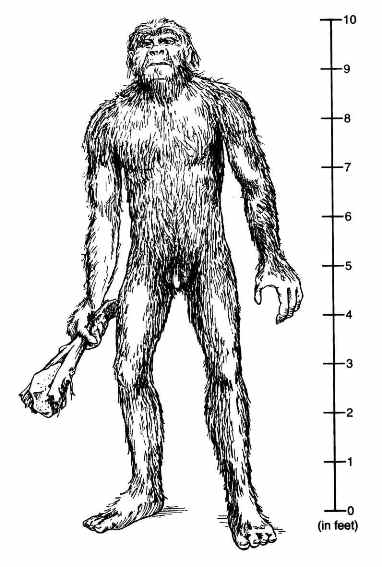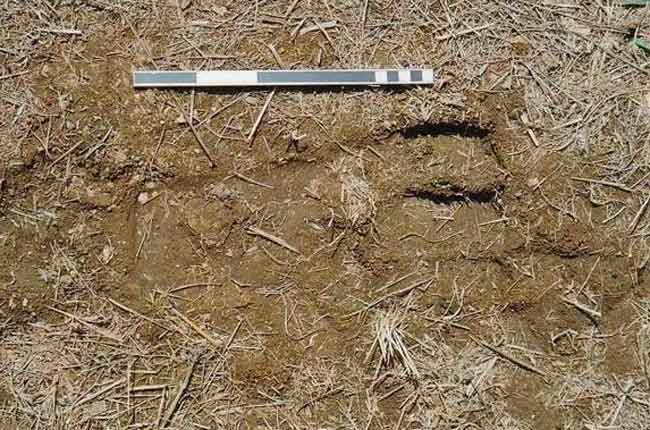Bush Blitz To Discover New Species
Posted by: Loren Coleman on February 16th, 2010

What a great idea. Take a large comb costing $10 million dollars (Australian ones) and rake it through the entire country of Australia for three years to find new animals.
Australia’s Environment Minister Peter Garrett is doing almost exactly that in his new initiative to find new species.
The project that is known as “Bush Blitz” is setting out to discover as many new species as possible in Australia over the next thirty-six months.
“The Bush Blitz will undertake a total of eighteen major expeditions during three years. Groups will be made up of 10-12 scientists and volunteers who will survey the nation’s reserves for hidden biological treasures. The program is focusing on places that are little-known both to the public and researchers,” reported the Sydney Morning Herald.
The Bush Blitz is funded by the Australian government (6 million dollars) and mining company BHP Billiton (4 million dollars).

A photograph of a footprint taken on mango farmer Katrina Tucker’s Acacia Hills property in 1997.
Now, let’s keep our fingers crossed that they can verify the Yowies. And here’s hoping they live-capture some of those Black Panthers of the Blue Mountains!
About Loren Coleman
Loren Coleman is one of the world’s leading cryptozoologists, some say “the” leading living cryptozoologist. Certainly, he is acknowledged as the current living American researcher and writer who has most popularized cryptozoology in the late 20th and early 21st centuries.
Starting his fieldwork and investigations in 1960, after traveling and trekking extensively in pursuit of cryptozoological mysteries, Coleman began writing to share his experiences in 1969. An honorary member of Ivan T. Sanderson’s Society for the Investigation of the Unexplained in the 1970s, Coleman has been bestowed with similar honorary memberships of the North Idaho College Cryptozoology Club in 1983, and in subsequent years, that of the British Columbia Scientific Cryptozoology Club, CryptoSafari International, and other international organizations. He was also a Life Member and Benefactor of the International Society of Cryptozoology (now-defunct).
Loren Coleman’s daily blog, as a member of the Cryptomundo Team, served as an ongoing avenue of communication for the ever-growing body of cryptozoo news from 2005 through 2013. He returned as an infrequent contributor beginning Halloween week of 2015.
Coleman is the founder in 2003, and current director of the International Cryptozoology Museum in Portland, Maine.










Wish them luck on the enterprise.
Hopefully the BUNYIP will be found.
Also the Megalania of the Autralian Outback. Giant Lizard.
Science doesn’t get too many chances to shove aside stupidity and groupthink in favor of open-mindedness. This would be one, guys.
“Yes. This should go without saying, but if you see a bunyip, a thylacine, or a yowie, that is sort of why we are doing this, and you will not be laughed at. REPORT WHAT YOU SEE.”
I agree that this is a great idea. I’ve often wished they would do the same thing in other parts of the world, the United States included.
I hope they find the Yowie as well, but I have heard of all sorts of strange animals. I think a queensland tiger, or out of place wolf would be cool as well.
That so called foot print is the bogus. I wish them all best in there quest, perhaps something will find them?
Food for thought: if a $10 million effort doesn’t find the thylacine or Yowie, but reports continue to pour in the next year of people seeing such when they go to get their morning newspaper off the front step in their bathrobes, will cryptozoology become more skeptical of “average Joe” reports, or not? Would Australia become a lower value target for cryptozoological expeditions? Would changes to any future expeditions be necessary to account for the areas covered/research methods of this government effort (e.g. any expedition would need to use different methods to “comb” than what failed in this project, etc.)? A success would vindicate and elevate the field. But would a failure harm CZ irreparably? DWA: if science gives you exactly what you want, and turns up no CZ-favored beasties, what then?
It would seem to me that this expedition will be a watershed moment for cryptozoology whether it does or doesn’t turn up new species. It is in effect something of the dream project of cryptozoology; the equivalent of the astronomer’s Hubble Space Telescope, JFK assassination researchers getting a new probe, alternative Egyptian history scholars getting carte blanche permission to dig at Giza, UFOologists getting a tour of Area 51. Much will be learned by studying the methods and results of this project and will probably be analyzed and debated by CZ for years to come. One way or another, over the next three years, CZ is going to change.
To be honest, even though some of it is interesting, I always had a problem with some kind of bigfoot creature (yowie) being in Australia.
alcalde:
“DWA: if science gives you exactly what you want, and turns up no CZ-favored beasties, what then?”
What then? Well, they’re either real, or they’re not.
Science hasn’t given crypto a thing in its history. (Other than a few of its bravest bucking the mainstream, so far to no avail.) So a first would be nice. Why not here?
Exactly what I want would be an extended, open-minded search, in the field, of areas of concentration as measured by sightings, tracks, etc. No up-front bias or agreements that we’ll just call anything funny we see bear (or kangaroo, or wombat) tracks. Total open mind. If that looks like a hominid footprint, ask the obvious questions first, like: what’s the probability of a barefoot dude with an 18-inch foot being out here? Or of a hoaxer coming to a place no one else would be likely to ever come, to leave one or two tracks? (Or a one-mile trackway that if it’s a hoax, a genius did it?) Or of six kangaroos landing on that one spot to make something that looks just by coincidence like a massive hominid print? Could it not be, oh, I don’t know, a massive hominid print? We’ve been wrong about so much, couldn’t we maybe possibly be wrong about this?
THEN we’ll see. One way or the other. TOTAL open mind. Find Out.
Why would science NOT want that?